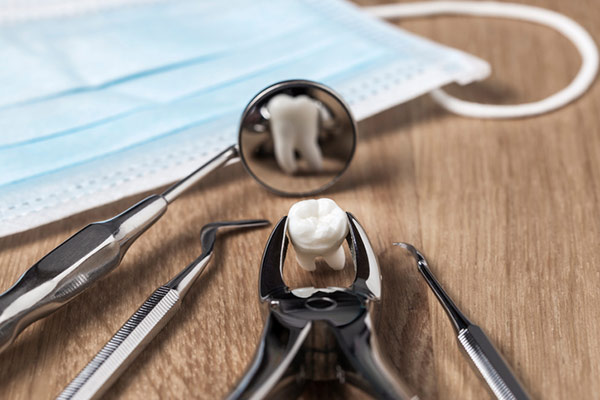Types of Tooth Extractions Tooth extractions are a standard dental procedure. There are different types of tooth extractions, and the type that your dentist performs will depend on the reason for the extraction and the location of the tooth. The procedure is generally quick and straightforward, and most people recover without problems. Tooth extractions are a standard dental procedure. There are different types of tooth extractions, and the type that your dentist performs will depend on the reason for the extraction and the location of the tooth. The procedure is generally quick and straightforward, and most people recover without problems.At Surf City Oral and Maxillofacial Surgery, our surgeons are experts in tooth extractions and are sure to give you satisfactory care for the entire procedure. Simple ExtractionThe most common type of tooth extraction is a simple extraction. This is where the dentist uses an elevator tool to loosen the tooth before using forceps to remove it. Simple extractions are usually performed on teeth visible in the mouth, such as the front teeth. Surgical ExtractionA surgical extraction is a more complex procedure used to remove teeth that are not visible in the mouth, such as impacted wisdom teeth. The dentist will make an incision in the gum to expose the tooth before using forceps to remove it. Surgical extractions are usually performed under local anesthesia, but you may need to be sedated if you are anxious or have a low pain threshold. The procedure could involve a couple of complications that are good to be aware of. Complications of Tooth ExtractionThe complications of tooth extractions are usually minor and can be easily treated. However, in rare cases, more severe complications can occur. These include: InfectionInfection is the most common complication of tooth extraction. The risk of infection is higher if you have a weakened immune system or the tooth is impacted. To combat this issue, you should ensure proper teeth cleaning. BleedingIt is normal to bleed after a tooth extraction. The bleeding should stop within a few hours. However, if the bleeding persists or is heavy, you should seek medical attention as this could signify a more serious problem. PainYou may experience some pain and discomfort after the procedure. You can treat this with over-the-counter pain medication. However, if the pain is severe, you should contact your dentist. Dry SocketA dry socket is a condition that can occur when the blood clot that forms in the socket after an extraction is dislodged. This can cause severe pain and should be treated by your dentist. Nerve DamageIn rare cases, the nerve that runs through the tooth can be damaged during extraction. This can cause numbness or tingling in the lips, tongue, or cheek. If you experience any of these symptoms, you should contact your dentist. As you can see, there are different types of tooth extractions, and the type that your dentist performs will depend on the reason for the extraction and the location of the tooth. The procedure is generally quick and straightforward, but there are a few potential complications that you should be aware of. If you have any concerns about the procedure, talk to your dentist. If you have any questions about tooth extraction, you can visit us or call at 657-384-2787 to schedule an appointment. |